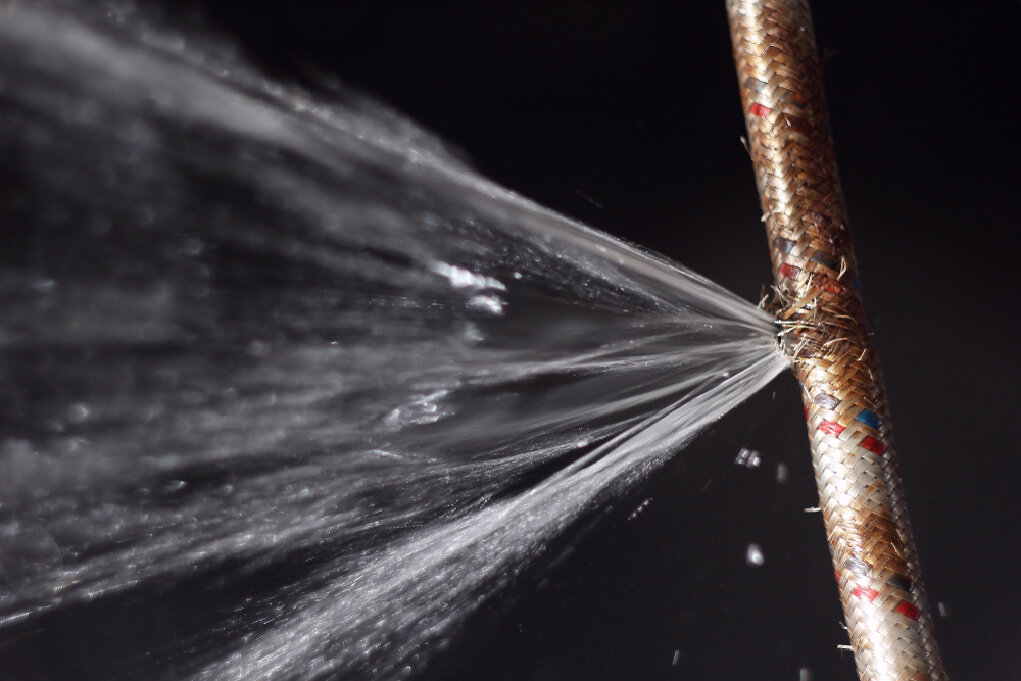A sudden gush of water flooding your kitchen or bathroom is a nightmare for any homeowner. Flexible or braided hoses are commonly found in homes, connecting taps, toilets, and washing machines. Despite their durability, they are a leading cause of water damage when they burst unexpectedly. Protecting your home by preventing flexible hose bursts is crucial for safeguarding your property and saving on repair costs.
In this blog, we’ll explore what causes flexible hoses to burst, how to identify early warning signs and practical tips for prevention.
Understanding Flexible Hose Bursts
Flexible hoses are made from a rubber inner tube surrounded by a braided stainless steel sheath for durability and flexibility. However, these hoses can fail over time due to:
- Age and Wear: Hoses typically have a 5–10 year lifespan. Over time, the rubber degrades and becomes brittle.
- Poor Installation: Incorrect installation can strain the hose, increasing the likelihood of failure.
- High Water Pressure: Excessive water pressure weakens the hose and its fittings.
- Corrosion: The stainless steel braid may corrode, particularly in damp environments.
- Damage: Physical impact or improper handling can compromise the hose’s integrity.
A burst hose can release hundreds of litres of water per hour, causing extensive damage to floors, walls, and belongings.

How to Protect Your Home from Flexible Hose Bursts
1. Inspect Hoses Regularly
One of the simplest ways to prevent hose bursts is by conducting routine inspections. Check for:
- Rust or Corrosion: Inspect the stainless steel braid for signs of rust or weakening.
- Cracks or Bulges: Look for visible damage to the rubber inner tube.
- Water Leaks: Even minor drips can indicate a problem that needs attention.
- Loose Connections: Ensure the fittings are tight and secure.
Regular inspections can help identify issues before they escalate.
2. Replace Hoses Periodically
Flexible hoses have a finite lifespan. Replace them every 5–10 years or sooner if signs of wear appear. When replacing hoses:
- Opt for high-quality hoses with a more extended warranty.
- Consider burst-resistant hoses, which have additional reinforcement.
- Use hoses with internal sleeves for added durability.
For professional installation and replacement, trust experts to ensure the job is done correctly.
3. Install a Pressure-Reducing Valve
High water pressure is a common culprit behind flexible hose failures. Installing a pressure-reducing valve (PRV) helps regulate water pressure within a safe range, reducing strain on hoses and other plumbing fixtures.
- Safe Range: Maintain water pressure between 40–60 psi (pounds per square inch).
- Monitor Pressure: Use a pressure gauge to ensure the PRV functions correctly.
4. Use Isolation Valves
Isolation valves allow you to shut off water to specific fixtures, limiting the impact of a burst hose. Ensure isolation valves are installed near taps, toilets, and appliances connected to flexible hoses. These valves make it easy to stop the water flow quickly in an emergency.
5. Install a Leak Detection System
Advanced leak detection systems can identify leaks or bursts early and automatically shut off the water supply. These systems provide peace of mind and can prevent significant damage.
- Smart Systems: Some leak detectors connect to your smartphone, sending alerts in case of an issue.
- Water Sensors: Place water sensors near areas prone to leaks for protection.
6. Avoid Straining or Kinking the Hose
Flexible hoses should be installed without excessive bending or kinking, which weakens the internal structure. Ensure there’s enough slack to prevent strain and avoid heavy objects resting on or pressing against the hose.
Signs Your Flexible Hose May Be at Risk
Knowing the warning signs of a failing hose can save you from an unexpected disaster. Look out for:
- Discoloured Water: Rust from the braided steel can indicate corrosion.
- Whistling or Rattling Sounds: Noises from the hose may signal excessive water pressure or an issue with fittings.
- Visible Damage: Frayed braids, cracks, or swelling are red flags.
- Frequent Leaks: Recurring leaks around the fittings suggest the hose is compromised.
If you notice these signs, contact a licensed plumber to assess and replace the hose.
What to Do If a Hose Bursts
Despite your best efforts, flexible hose bursts can still occur. Here’s what to do:
- Turn Off the Water: Immediately shut off the main water supply or the isolation valve to minimise flooding.
- Contain the Damage: Use towels, buckets, or mops to control the spread of water.
- Call a Professional: Contact a plumber to repair or replace the burst hose. The team at Ezy-Plumb can respond promptly to prevent further issues.
- File an Insurance Claim: Document the damage with photos and videos for your home insurance claim.
Preventing Flexible Hose Bursts Saves Money and Hassle
Proactively maintaining your flexible hoses and investing in preventive measures can save you from costly repairs, water damage, and stress. You can protect your home and ensure a reliable water supply by inspecting hoses regularly, installing safety features like pressure-reducing valves, and knowing when to replace ageing hoses.
Contact trusted professionals for expert advice, installations, or emergency plumbing services. Their experienced team can help you safeguard your home against flexible hose failures and other plumbing issues.
